Physical Address
304 North Cardinal St.
Dorchester Center, MA 02124

Sri Lanka in 2 Weeks- Your Ultimate 2025 Budget Itinerary
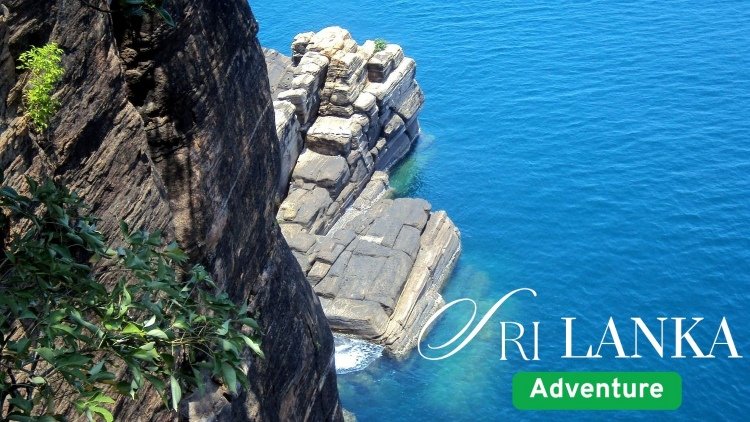
Sri Lanka-adventure
Meta Description: Discover Sri Lanka’s hidden treasures with our comprehensive 2-week budget itinerary for 2025. Find cheap flights, budget-friendly hotels, and local secrets that transform your journey into an unforgettable adventure through this tropical paradise.
Picture this: you’re sipping freshly brewed Ceylon tea while watching the sunrise paint the ancient rock fortress of Sigiriya in golden hues. The gentle morning breeze carries the scent of frangipani flowers, and somewhere in the distance, a peacock calls out its melodious greeting. This isn’t just a dream,it’s what awaits you in Sri Lanka, and I’m here to show you how to experience it all without emptying your wallet.
Having explored this teardrop-shaped island multiple times, I’ve discovered that Sri Lanka offers something magical that many destinations lack: authentic experiences that don’t require a premium price tag. Whether you’re planning family trip ideas or seeking hidden gems away from crowded tourist spots, this island nation delivers adventures that linger in your heart long after you’ve returned home.
Sri Lanka stands as one of Asia’s best-kept secrets, where undiscovered treasures await around every corner. Unlike its more touristy neighbors, this island maintains an authentic charm that makes every interaction feel genuine. From chatting with tea pickers in misty plantations to sharing stories with fishermen on pristine beaches, you’ll find yourself immersed in a culture that welcomes visitors like family.
The beauty of traveling through Sri Lanka lies in its incredible diversity packed into a relatively small area. Within just two weeks, you can explore ancient kingdoms, trek through emerald hill country, spot leopards in national parks, and relax on some of the world’s most beautiful beaches. What makes it even better? You can do all this while maintaining a reasonable budget that leaves room for unexpected discoveries.
Let’s talk numbers because I know that’s what keeps many travelers awake at night. After numerous trips and careful tracking, I’ve found that a comfortable two-week Sri Lankan adventure costs between $800-1,200 per person, depending on your travel style and preferences.
Backpacker Budget ($25-35 per day):
Mid-Range Explorer ($40-60 per day):
Comfortable Traveler ($70-100 per day):
The secret to stretching your budget lies in smart choices rather than constant penny-pinching. I’ve learned that staying in locally-owned guesthouses not only saves money but often provides richer cultural experiences than sterile hotel chains.
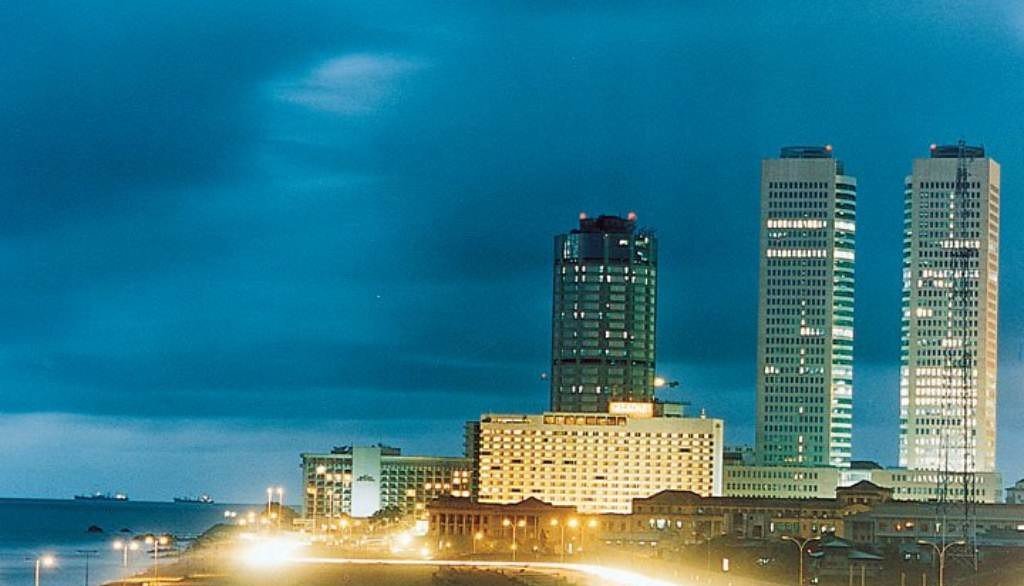
Your Sri Lankan journey begins in Colombo, a city where colonial architecture dances with modern skyscrapers, and street food vendors serve up aromatic curries that make your taste buds sing. Don’t rush through the capital,it holds surprises that many travelers miss in their eagerness to reach more famous destinations.
Start your exploration in Fort, where weathered Dutch colonial buildings tell stories of centuries past. The Red Mosque, with its distinctive Indo-Saracenic architecture, provides a stunning contrast against the bustling commercial district. As evening approaches, head to Galle Face Green, where locals gather to fly kites and enjoy street food while watching spectacular sunsets over the Indian Ocean.
Where to Stay:
The real magic happens when you venture into Pettah Market, a sensory explosion where vendors hawk everything from aromatic spices to handwoven textiles. The cacophony of voices haggling in Sinhala, Tamil, and English creates a symphony of commerce that’s been playing for generations.
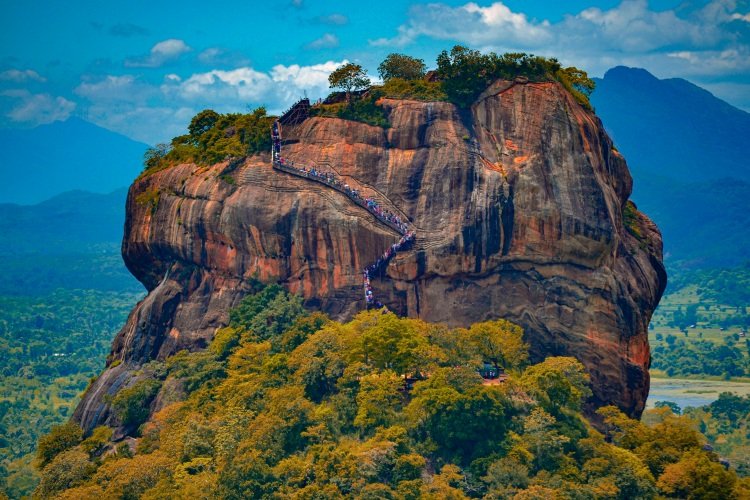
Sigiriya Rock Fortress
Nothing quite prepares you for the first glimpse of Sigiriya Rock Fortress rising from the flat plains like an ancient skyscraper. This UNESCO World Heritage site isn’t just about the climb,though the 1,200 steps to the summit will definitely get your heart pumping,it’s about standing where kings once ruled and feeling the weight of history beneath your feet.
I recommend starting your climb at sunrise, not just for the cooler temperatures, but for the magical moment when the first rays of sunlight illuminate the surrounding landscape. The ancient frescoes of the Sigiriya Maidens, painted over 1,500 years ago, still retain their vibrant colors and mysterious smiles that seem to follow you as you ascend.
Budget-Friendly Accommodation Near Sigiriya:
The village surrounding Sigiriya offers authentic experiences that many tourists miss. Join a village tour where you’ll learn traditional cooking methods, try your hand at farming, and share meals with local families who treat guests like long-lost relatives.
For those seeking undiscovered treasures, explore the lesser-known Pidurangala Rock, just a short walk from Sigiriya. The climb is easier, the crowds are thinner, and the view of Sigiriya Rock at sunset is absolutely breathtaking. Local vendors sell fresh king coconut water at the base,nothing tastes better after a challenging climb.
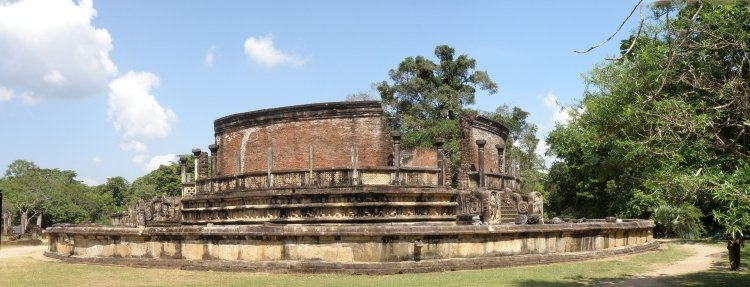
If Sigiriya is Sri Lanka’s vertical wonder, then Polonnaruwa is its horizontal masterpiece. This ancient capital spreads across several square kilometers, best explored by bicycle as gentle breezes carry the scent of lotus flowers from ancient reservoirs.
Renting a bicycle costs about $3 for the day, and trust me, it’s the perfect way to navigate between stunning ruins at your own pace. The Gal Vihara, with its four magnificent Buddha statues carved from a single granite rock, creates moments of profound silence that make you forget about camera clicks and tourist chatter.
The local favorite spot that few tourists discover is the Parakrama Samudraya, an enormous man-made reservoir built in the 12th century. Locals call it the “Sea of Parakrama,” and watching sunrise or sunset from its banks feels like being at the edge of the world.
Where to Stay in Polonnaruwa:
Don’t miss the opportunity to interact with local craftsmen who still create traditional pottery and woodwork using methods passed down through generations. These cultural experiences provide insights that no guidebook can offer.
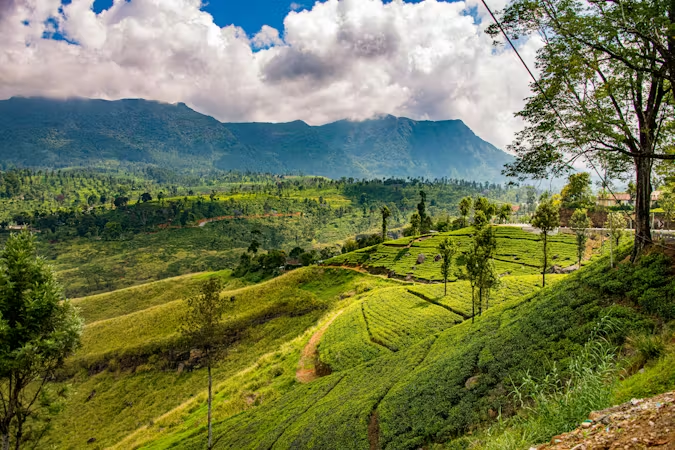
Kandy – Heart of Cultural Sri Lanka
As your train winds through emerald hills toward Kandy, the landscape transforms from ancient plains to lush highlands where tea plantations carpet rolling hills like green velvet. Kandy isn’t just Sri Lanka’s cultural capital,it’s the soul of the island, where traditions remain alive in daily life rather than being preserved only for tourists.
The Temple of the Tooth Relic draws pilgrims from around the world, but what captivated me most was witnessing the evening puja ceremony. The rhythmic drumming, the scent of lotus flowers and incense, and the devotion of worshippers created an atmosphere of spirituality that transcends religious boundaries.
Kandy Accommodation Options:
The real treasure of Kandy lies in its surrounding villages where traditional arts flourish. Visit a batik workshop where artisans create intricate designs using ancient techniques, or spend an afternoon with woodcarvers whose families have been practicing their craft for centuries.
Kandy Lake, despite being artificial, has become such an integral part of the city that locals can’t imagine their town without it. Join the evening stroll that locals take around the lake,it’s free entertainment and a perfect way to observe daily life in this cultural heartland.
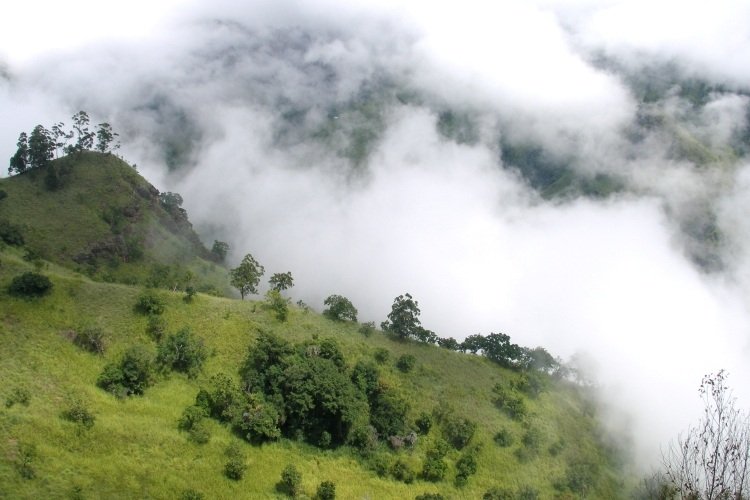
Ella – Where Mountains Touch Clouds
The journey from Kandy to Ella aboard the highland train ranks among the world’s most scenic railway experiences. As the train chugs through cloud forests and across bridges that span deep valleys, you’ll understand why this route appears on every travel photographer’s bucket list.
Ella itself feels like a mountain town that time forgot, where backpackers and local farmers share the same tea shops, and conversations flow as easily as the mountain streams. The famous Nine Arch Bridge, built entirely from stone and brick without steel, creates the perfect Instagram moment, but the real magic happens when you explore the surrounding countryside on foot.
Ella’s Best Budget Stays:
Little Adam’s Peak offers spectacular views for those who prefer shorter hikes, while the more adventurous can tackle Ella Rock for panoramic vistas that stretch to the southern coast on clear days. What most tourists don’t realize is that local guides aren’t just helpful,they’re storytellers who transform every trail into a journey through local folklore and natural history.
The tea factory visits around Ella provide authentic experiences where you can see the entire process from leaf to cup while learning about the lives of estate workers. Many hidden gems in this region remain known only to locals, like secret waterfalls and viewpoints that offer solitude away from crowded tourist spots.
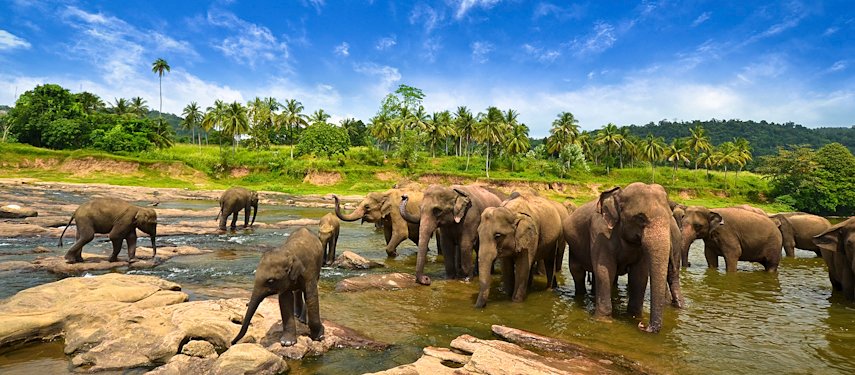
Yala National Park – Safari Adventures
Sri Lanka’s wildlife experiences rival those of African destinations, but at a fraction of the cost. Yala National Park, with the world’s highest density of leopards, offers safari adventures that create memories lasting lifetimes.
Early morning safaris provide the best wildlife viewing opportunities when animals are most active. The park’s diverse ecosystems support not just leopards, but elephants, crocodiles, sloth bears, and over 200 bird species. What makes Yala special isn’t just the wildlife,it’s the knowledgeable local guides who can spot a leopard’s tail flick from hundreds of meters away.
Safari Budget Planning:
Accommodation Near Yala:
The nature and wildlife experiences extend beyond the main park. Local communities offer village tours where you can observe how humans and wildlife coexist, sometimes challenging but always fascinating.
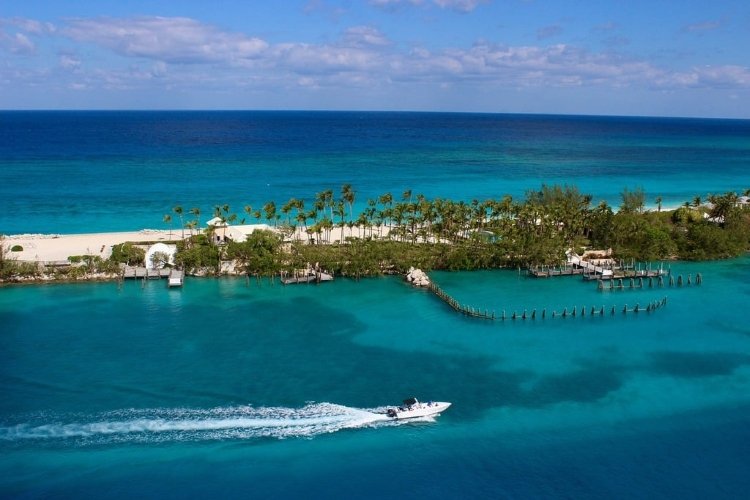
Southern Coast – Beach Paradise
Your final days in Sri Lanka unfold along the southern coast, where golden beaches meet turquoise waters, and fishing villages maintain rhythms unchanged for generations. This isn’t just about lounging on beaches,though the beaches here rank among Asia’s finest,it’s about discovering coastal communities where hospitality flows as naturally as the ocean tides.
Mirissa: Famous for whale watching, this small town transforms into a backpacker haven during season. Blue whales, the largest animals on Earth, migrate past these shores from December to April, creating once-in-a-lifetime encounters.
Unawatuna: A horseshoe bay protected by coral reefs, perfect for swimming and snorkeling. The beach maintains its charm despite growing popularity, especially if you visit during weekday mornings when local fishermen pull their colorful boats onto the sand.
Galle: The UNESCO-listed fort city where Dutch colonial architecture houses boutique hotels, art galleries, and restaurants serving fusion cuisine that reflects the port city’s multicultural heritage.
Coastal Accommodation Options:
The southern coast offers perfect opportunities for honeymoon getaways with its romantic sunsets and intimate beachside restaurants. However, families will also find plenty of activities, from turtle watching to teaching kids about coral conservation.
Sri Lanka’s transportation network reflects the island’s character,sometimes chaotic, often delayed, but always an adventure. The key to budget travel lies in embracing the local transport system rather than fighting it.
Sri Lankan trains move at a leisurely pace that allows you to savor landscapes rather than rushing through them. The Kandy to Ella route, consistently ranked among the world’s most beautiful train journeys, costs less than $5 for a second-class seat but provides million-dollar views.
Train Travel Tips:
Local buses connect every corner of the island for incredibly low prices,rarely more than $3 for intercity journeys. Yes, they’re crowded, sometimes uncomfortable, but they’re also windows into local life where conversations with fellow passengers often lead to invitations for home-cooked meals.
Bus Travel Survival Guide:
Three-wheelers provide convenient short-distance transport, but prices require negotiation skills. In tourist areas, initial quotes often inflate by 200-300%. A simple “What’s the local price?” usually brings quotes to reasonable levels.
Tuk-tuk Price Guidelines:
For those preferring more comfort, app-based services like PickMe operate in major cities with fixed pricing that eliminates negotiation stress.
Sri Lanka’s accommodation scene has evolved dramatically, offering options that suit every budget while maintaining local character. The secret lies in choosing places that feel like homes away from home rather than sterile hotel rooms.
Family-run guesthouses provide not just affordable accommodation but authentic cultural experiences. Hosts often become unofficial tour guides, sharing insider knowledge about local attractions and hidden spots that don’t appear in guidebooks.
What to Expect:
Sri Lanka’s boutique hotel scene offers incredible value, with properties that would cost triple in other destinations. Many occupy restored colonial buildings or traditional houses, combining historical charm with modern amenities.
Price Range: $40-80 per night Features: Swimming pools, spa services, gourmet restaurants Locations: Available in all major tourist areas
The growing eco-tourism movement has created accommodation options that minimize environmental impact while maximizing guest experiences. These properties often support local communities and conservation efforts.
When planning travel trips, consider that accommodation choices impact not just your budget but also your cultural immersion level. The most expensive options aren’t always the most memorable.
Sri Lankan cuisine deserves recognition as one of Asia’s most flavorful yet underrated food cultures. The blend of spices, fresh ingredients, and cooking techniques creates dishes that satisfy both adventurous palates and cautious eaters.
Street food vendors across Sri Lanka serve authentic dishes at prices that seem almost too good to be true. A complete meal rarely costs more than $2-3, and the variety available ensures you’ll never eat the same thing twice.
Must-Try Street Foods:
Small family-run restaurants, often identified only by handwritten signs, serve the most authentic Sri Lankan food. These establishments focus on quality rather than presentation, offering curries that simmer for hours to develop complex flavors.
Budget Dining Strategy:
Learning to prepare Sri Lankan dishes provides skills you can enjoy long after your trip ends. Many guesthouses and cultural centers offer cooking classes that include market visits and spice garden tours.
Class Options:
The beauty of Sri Lankan cuisine lies in its regional variations. Coastal areas emphasize seafood and coconut, while hill country cuisine features heartier dishes that warm you from within during cool mountain evenings.
Every traveler seeks that perfect moment when they discover something special that feels like their own secret. Sri Lanka rewards curious explorers with countless such opportunities, from ancient temples tucked away in forests to beaches where your footprints might be the only ones in the sand.
While Sigiriya and Polonnaruwa attract crowds, dozens of equally impressive sites remain relatively unknown. These historical wonders offer intimate experiences with Sri Lanka’s ancient past without the tourist bus chaos.
Ritigala Monastery: Hidden in dry zone forest, these ruins create an almost mystical atmosphere where meditation comes naturally.
Buduruwagala: Ancient Buddha statues carved into rock faces, surrounded by forest where peacocks call and monkeys swing through trees.
Mulkirigala Rock Temple: A series of cave temples ascending a rocky outcrop, offering spectacular views across southern Sri Lanka.
Sri Lanka’s coastline stretches over 1,600 kilometers, ensuring plenty of secluded spots for those willing to venture beyond popular destinations.
Tangalle Bay: Multiple small bays connected by rocky headlands, perfect for finding your own private stretch of sand.
Nilaveli Beach: Northern coast paradise with powder-soft sand and crystal-clear waters, still recovering from years of limited access.
Arugam Bay: Surfing capital that maintains its laid-back village atmosphere despite growing international recognition.
The hill country offers numerous opportunities to experience traditional Sri Lankan village life, where hospitality isn’t a business strategy but a way of life.
Village homestays provide authentic experiences where you’ll participate in daily activities like tea plucking, rice cultivation, or traditional cooking. These locally favored destinations offer insights into rural life that no hotel can replicate.
When seeking undiscovered treasures, remember that the journey often matters more than the destination. Some of my most memorable experiences happened during unplanned stops at roadside temples or conversations with fellow travelers on long bus rides.
Sri Lanka’s greatest treasure isn’t found in ancient ruins or natural beauty,it’s in the warmth of its people and the richness of their cultural traditions. Understanding local customs and participating respectfully in cultural activities transforms tourists into welcomed guests.
Buddhism plays a central role in Sri Lankan life, and visiting temples provides opportunities for spiritual reflection while learning about local beliefs. Proper etiquette shows respect and often leads to meaningful interactions with monks and devotees.
Temple Visit Guidelines:
Sri Lankan festivals blend religious devotion with community celebration, creating spectacles of color, sound, and shared joy. Timing your visit to coincide with major festivals provides unforgettable experiences.
Major Festivals:
Sri Lanka maintains living traditions in various art forms, from intricate wood carving to elaborate mask making. Visiting workshops and learning about these crafts provides insights into cultural continuity.
Traditional Craft Centers:
Engaging with these cultural experiences requires patience and genuine interest rather than just photo opportunities. Many artisans speak limited English but communicate fluently through their craft demonstrations.
Successful travel requires attention to practical details that can make or break your Sri Lankan adventure. Fortunately, Sri Lanka makes things relatively simple for most visitors.
Sri Lanka’s Electronic Travel Authorization (ETA) system allows most nationalities to obtain travel permission online before arrival. The process takes minutes and costs $50 for most tourists.
ETA Application Process:
Tourist visas allow 30-day stays with possible extensions available through immigration offices in major cities.
Sri Lanka’s tropical climate varies significantly by region and season, making some areas perfect while others experience heavy rainfall.
Optimal Travel Seasons:
The beauty of Sri Lanka’s compact size means you can always find good weather somewhere on the island. When monsoons affect one coast, the opposite side usually enjoys sunny skies.
Sri Lanka ranks among Asia’s safest destinations with excellent healthcare facilities in major cities. Basic precautions ensure trouble-free travel.
Health Preparation:
Safety Guidelines:
Smart spending doesn’t mean sacrificing experiences,it means making informed choices that maximize value while minimizing waste. After multiple trips to Sri Lanka, I’ve developed strategies that consistently reduce costs without compromising adventure quality.
Train vs. Bus Economics: While trains offer scenic routes, buses reach more destinations at lower costs. For budget travelers, mixing both creates perfect balance between experience and economy.
Group Transportation: Sharing tuk-tuks, private cars, or tour costs among fellow travelers can reduce individual expenses by 50-70%. Hostels and guesthouses facilitate these connections naturally.
Advance Booking Benefits: Train reservations, especially for popular routes like Kandy-Ella, save money and guarantee seats during peak seasons.
Off-Season Advantages: Traveling during shoulder seasons (April-May, October-November) reduces accommodation costs by 30-50% while avoiding peak-season crowds.
Longer Stay Discounts: Most guesthouses offer reduced rates for stays exceeding three nights. Negotiate directly with owners for best deals.
Location Strategy: Staying slightly outside main tourist centers provides significant savings while maintaining easy access to attractions.
Local Market Shopping: Purchasing fruits, snacks, and drinks from local markets costs fraction of hotel prices while supporting local economy.
Lunch Rice and Curry: Traditional lunch packets from local shops cost $1-2 and provide authentic culinary experiences.
Free Breakfast Advantage: Many guesthouses include breakfast, reducing daily food costs while ensuring energy for morning activities.
When planning tourist routes, consider that flexibility with timing and routing often creates unexpected savings opportunities.
Sri Lanka provides endless photographic opportunities, from ancient architecture to vibrant cultural scenes. However, the best travel memories often come from moments when cameras remain in bags and full attention focuses on present experiences.
Respectful Photography:
Best Photo Opportunities:
Keeping a travel journal helps process experiences while creating permanent records that photos alone cannot capture. Digital tools work fine, but handwritten journals often produce more thoughtful reflection.
Journal Prompts:
The goal isn’t creating polished prose but capturing authentic thoughts and emotions that will transport you back to specific moments years later.
Responsible tourism ensures that Sri Lanka’s natural beauty and cultural richness remain intact for future generations while providing economic benefits to local communities.
Waste Reduction:
Wildlife Protection:
Economic Impact:
Cultural Respect:
These practices ensure your travel contributes positively to destinations rather than merely extracting experiences for personal enjoyment.
How much should I budget for a 2-week Sri Lanka trip? Budget travelers can manage with $600-800, mid-range explorers should plan for $1,000-1,400, while comfortable travelers might spend $1,500-2,100. These ranges include accommodation, food, transportation, and activities.
Is Sri Lanka safe for solo female travelers? Sri Lanka ranks among Asia’s safest destinations for women traveling alone. Basic precautions like avoiding isolated areas after dark and dressing modestly at religious sites ensure trouble-free travel.
What’s the best way to get around Sri Lanka? Trains offer scenic routes and local experiences, buses provide extensive coverage at low costs, and tuk-tuks work well for short distances. Mixing all three creates optimal balance between cost and convenience.
Do I need special vaccinations for Sri Lanka? No mandatory vaccinations required, though hepatitis A, typhoid, and Japanese encephalitis vaccines might be recommended depending on your travel plans and risk tolerance.
Can I drink tap water in Sri Lanka? Stick to bottled or filtered water to avoid stomach issues. Most accommodations provide filtered water, and bottled water costs less than $0.50.
What should I pack for Sri Lanka’s climate? Lightweight, breathable clothing for lowlands, warmer layers for hill country, modest attire for temples, good walking shoes, rain jacket during monsoon seasons, and strong sunscreen.
How reliable is internet connectivity? Major cities and tourist areas have good WiFi coverage. Purchase local SIM cards for data connectivity throughout your travels—they’re inexpensive and widely available.
Is tipping expected in Sri Lanka? Tipping isn’t mandatory but appreciated. Round up restaurant bills, tip guides $5-10 per day, and give small amounts to helpful service providers.
What’s the local currency and where can I exchange money? Sri Lankan Rupee (LKR) is the local currency. Banks, authorized dealers, and ATMs provide best exchange rates. Avoid street money changers and bring US dollars or Euros for exchange.
How much time do I need at each destination? Allow 2-3 days for cultural triangle sites, 2-3 days for hill country, 2-3 days for wildlife experiences, and 3-4 days for coastal areas. This provides sufficient time without feeling rushed.
Sri Lanka offers everything discerning travelers seek: rich cultural heritage, stunning natural beauty, warm hospitality, and experiences that create lifelong memories,all at prices that won’t devastate your savings account. This island nation proves that luxury doesn’t require enormous budgets, just smart planning and open hearts.
Whether you’re drawn to ancient temples that whisper stories of forgotten kingdoms, misty mountains where tea gardens paint landscapes in emerald green, or pristine beaches where time moves at coconut-palm pace, Sri Lanka delivers adventures that satisfy every traveler’s dreams.
The secret to successful Sri Lankan travel lies not in expensive tours or luxury hotels, but in embracing the island’s natural rhythm and genuine hospitality. When you choose locally-owned guesthouses over international chains, when you ride public buses instead of private cars, when you eat at local restaurants rather than tourist spots, you don’t just save money,you gain authentic experiences that no amount of money can buy.
Start planning your Sri Lankan adventure today. Book those cheap flights, research budget-friendly hotels, and prepare for two weeks that will redefine your understanding of value travel. Remember, the best journeys aren’t measured by miles traveled or money spent, but by moments of connection, discovery, and wonder that stay with you forever.
Ready to explore Sri Lanka’s hidden treasures? Visit Popular Destinations for more inspiration, and begin planning the adventure of a lifetime. For comprehensive travel planning assistance and family trip ideas, explore our Family Trip Planning resources.
Sri Lanka awaits your footsteps, your curiosity, and your sense of adventure. The only question remaining is: when will you answer its call?
Targeted Keywords Used in This Article: Sri Lanka 2 weeks itinerary, budget travel Sri Lanka, cheap flights Sri Lanka, budget-friendly hotels, hidden gems Sri Lanka, cultural experiences, family trip ideas, undiscovered treasures, planning travel trips, popular destinations, honeymoon getaways, historical wonders, nature wildlife, planning tourist routes, locally favored destinations, affordable accommodation, authentic experiences, travel budget breakdown, sustainable tourism, local food experiences
*This article is exclusively created for TravelGoEasy.net and is protected by copyright. Unauthorized reproduction or use
Sri Lanka offers everything discerning travelers seek: rich cultural heritage, stunning natural beauty, warm hospitality, and experiences that create lifelong memories,all at prices that won’t devastate your savings account. This island nation proves that luxury doesn’t require enormous budgets, just smart planning and open hearts.




